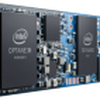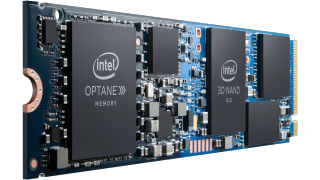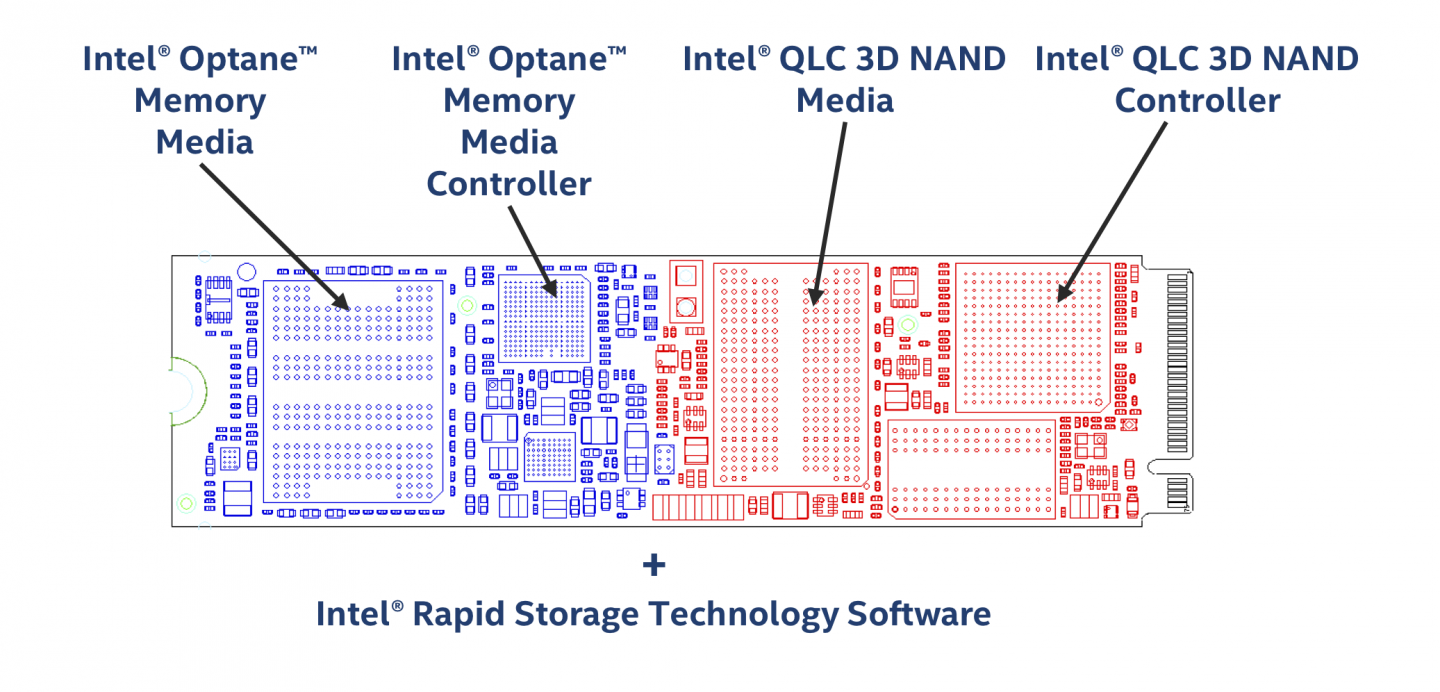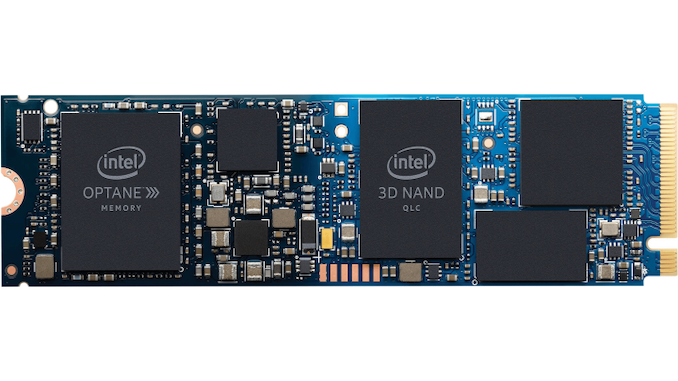Intel released details about a new SSD called Optane H10. This is not just an SSD as it uses both Intel's QLC flash memory and 3D Xpoint (also known as Optane). Available in m.2 format, and uses the nvme 1.1 protocol with a pcie 3.0 x4 interface.
The SSD manages a sequential reading speed 2400 MB per second, and sequential writing at 1800 MB per second. The random read and write speeds are respectively 32K iops and 30K iops on QD1, on QD2 those speeds are both at 55K iops.
-- Intel -- Intel revealed details about Intel Optane memory H10 with solid-state storage that combines the responsiveness of Intel Optane technology with the storage capacity of Intel Quad Level Cell (QLC) 3D NAND technology in a single space-saver M.2 form factor.
Combining Intel Optane technology with Intel QLC 3D NAND technology on a single M.2 module enables Intel Optane memory expansion into thin and light notebooks and certain space-constrained desktop form factors - such as all-in-one PCs and mini PCs. The new product also offers a higher level of performance not met by traditional Triple Level Cell (TLC) 3D NAND SSDs today and eliminates the need for a secondary storage device.
Intel's leadership in computing infrastructure and design allows the company to utilize the value of the platform in its entirety (software, chipset, processor, memory and storage) and deliver that value to the customer. The combination of high-speed acceleration and large SSD storage capacity on a single drive will benefit everyday computer users, whether they use their systems to create, game or work. Compared to a standalone TLC 3D NAND SSD system, Intel Optane memory H10 with solid-state storage enables both faster access to frequently used applications and files and better responsiveness with background activity.
8th Generation Intel Core U-series mobile platforms featuring Intel Optane memory H10 with solid state storage will be arriving through major OEMs starting this quarter. With these platforms, everyday users will be able to:
- Launch documents up to 2 times faster while multitasking.
- Launch games 60% faster while multitasking.
- Open media files up to 90% faster while multitasking.
SSDs with Intel Optane memory are the fastest compared to NAND SSDs in the majority of common client use cases. Intel-based platforms with Intel Optane memory adapt to everyday computing activities to optimize the performance for the user's most common tasks and frequently used applications. With offerings of up to 1TB of total storage, Intel Optane memory H10 with solid state storage will have the capacity users need for their apps and files today - and well into the future.
The Intel Optane memory H10 with solid-state storage will come in the following capacities, 16GB (Intel Optane memory) + 256GB (storage); 32GB (Intel Optane memory) + 512GB (storage); and 32GB (Intel Optane memory) + 1TB storage.





